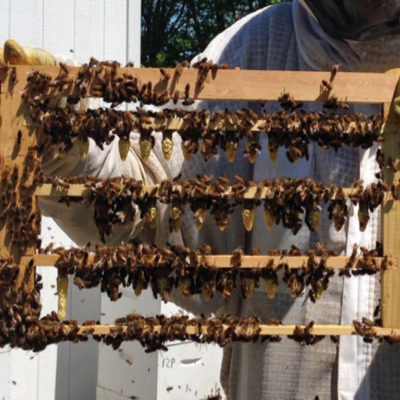Queen Bees
The greatest threat to honey bees is the Varroa destructor mite. First found in the USA in 1987, it originated in Asia, and has now spread around the world.
The mites feed on honey bees and bee larvae. This transfers viral diseases to the colony, which can result in death of the entire colony in a relatively short time.
A number of mite treatments exist, but the mites are now resistant to some of the earlier ones. A few treatments are still effective but even for these, time could be running out.
We could just allow Nature to have its way. Over time, the honey bee could develop its own resistance to Varroa mites and their associated diseases. However, during that time, further enormous losses of bees would take place.
So, what else can be done?
Our approach is twofold: To treat for Varroa mites on an as-needed basis (Integrated Pest Management, IPM), and also to breed Queen bees that are naturally mite resistant.
As a member of the Indiana Queen Breeders Association, we are breeding bees that contain genetics from mite-biter bees developed at Purdue University Bee Labs, and from Varroa sensitive hygiene (VSH) bees developed at the USDA Honey Bee Labs and the University of Minnesota.
Our breeding involves artificially inseminating selected virgin queens with semen from selected drones and subsequently cross-breeding the resultant queens with other stock. Our locally-bred queens are better able to survive Varroa mites, Indiana winters, produce excellent quantities of honey, and are still gentle to handle. We sell queen cells, virgin queens, and mated queens. We are also available for Instrumental Insemination services.





